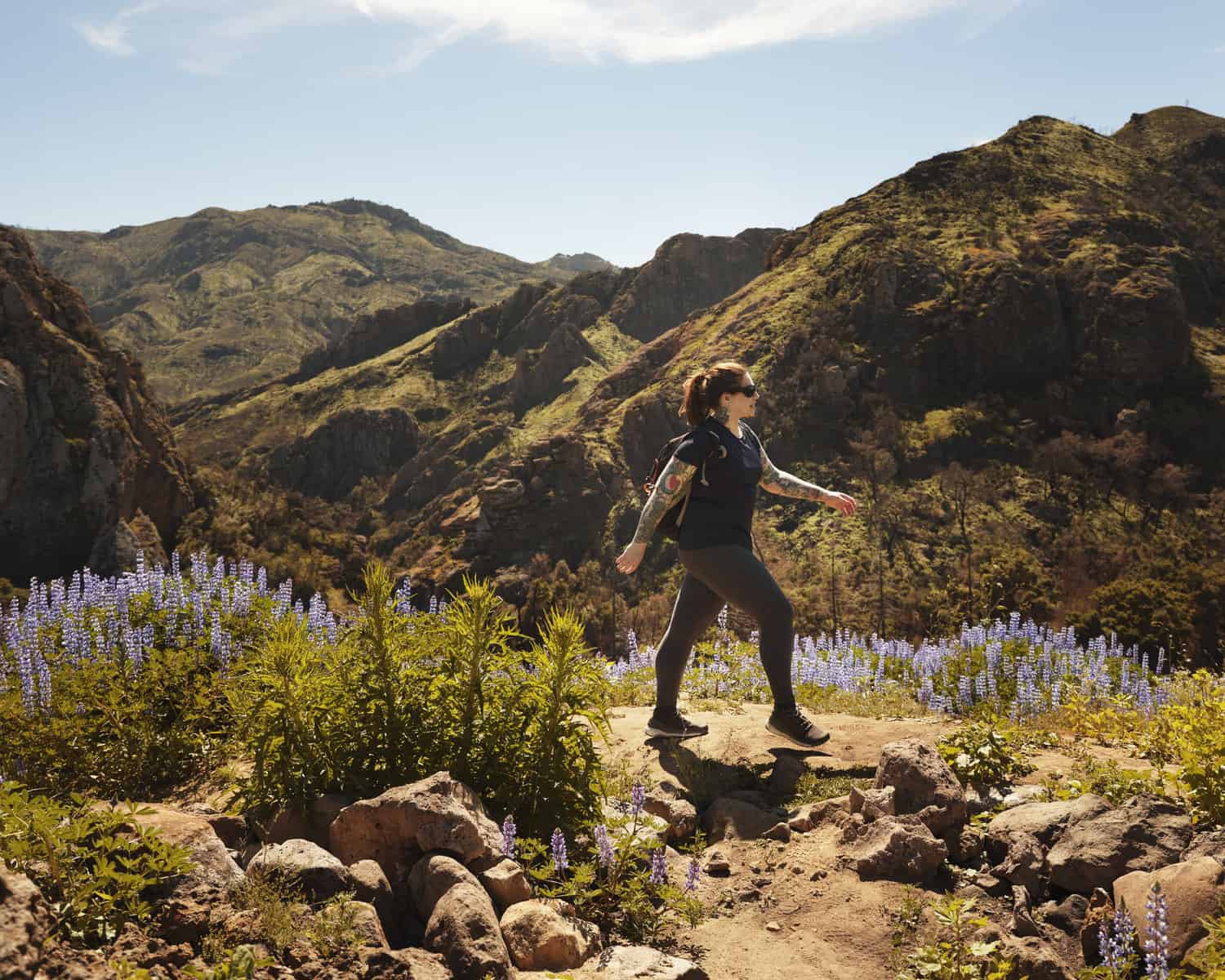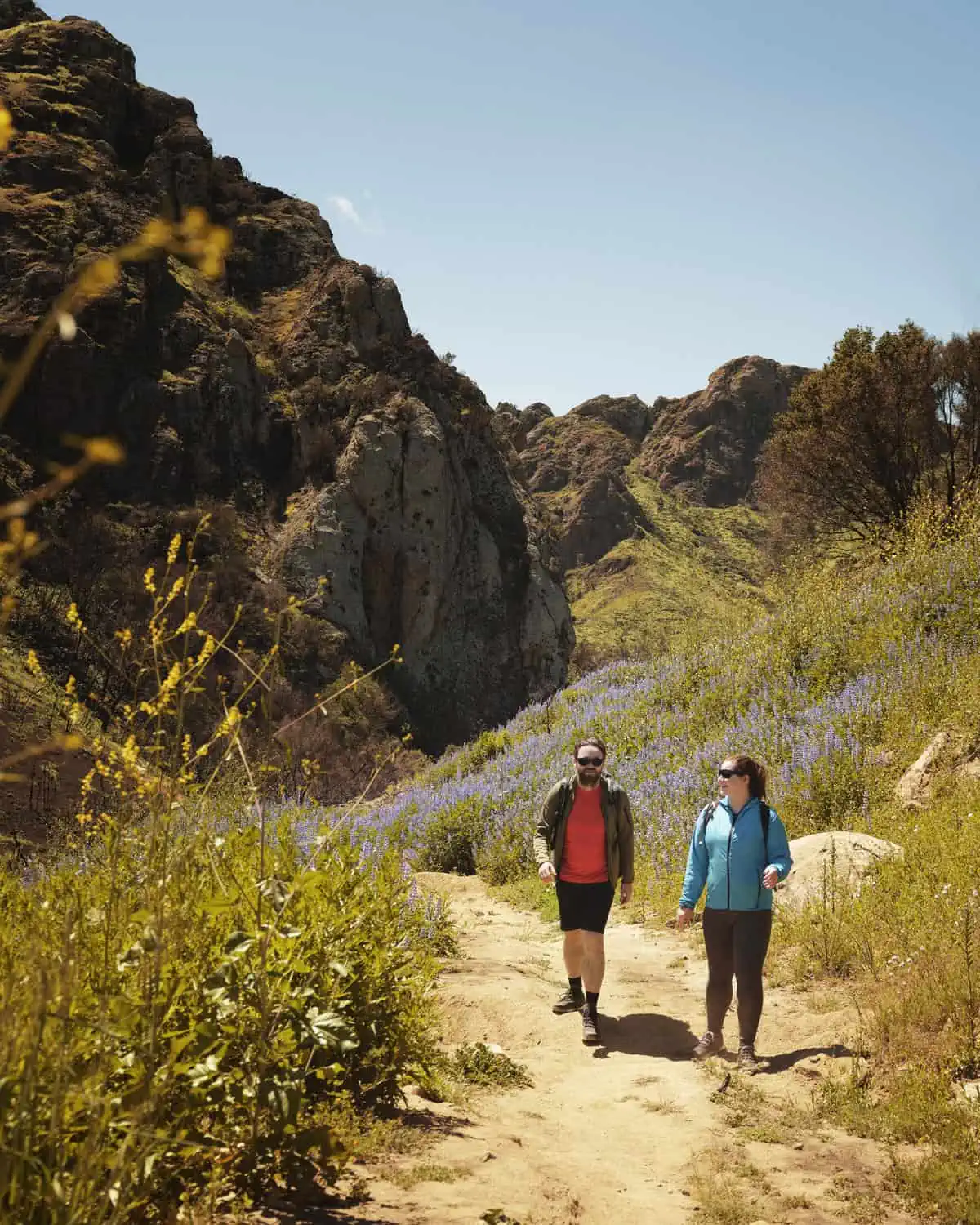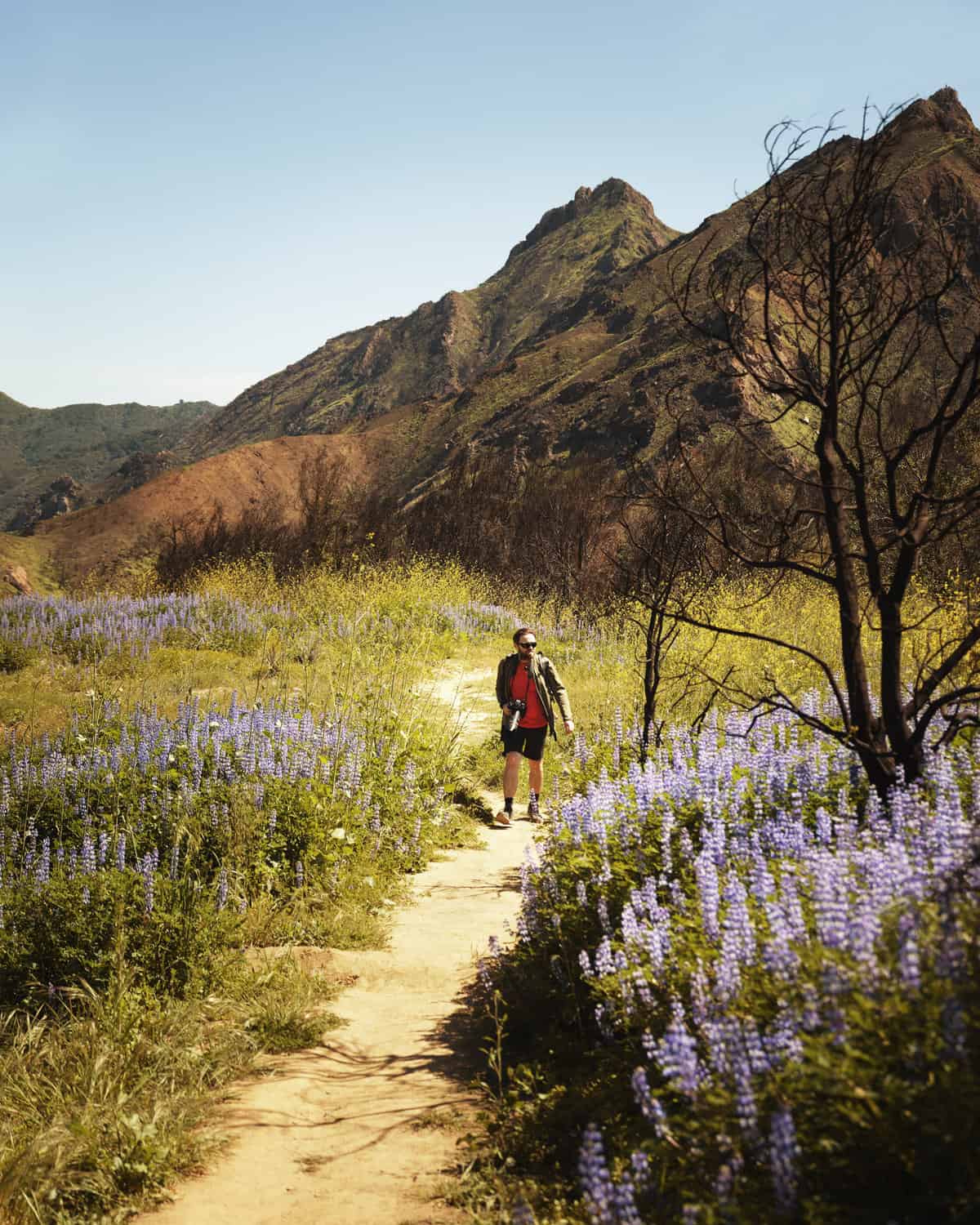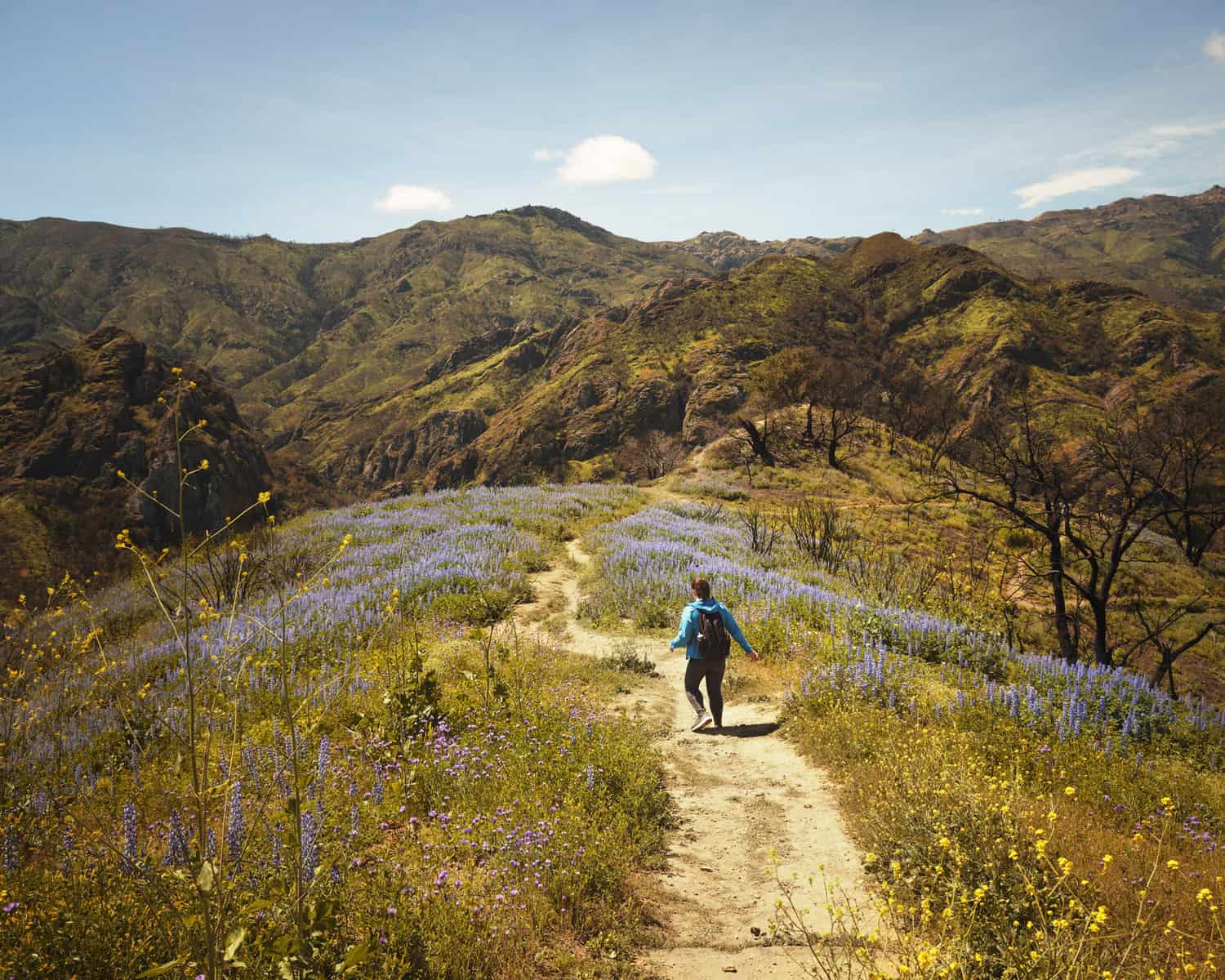‘Stop over thinking this step and just do it!’ Even though I kept telling myself that same phrase over and over again I still found myself grinding to a halt looking at what was right in front of me. ‘It’s ok, just step down’ said Matt who was patiently waiting for me to take a simple step forward.
The thing is, it didn’t feel simple. In fact there have been many times where I have become so stuck in my head that I can’t find a way to move forward. As much as I love being in nature, when I began hiking I started to see a whole number of things that were mental blocks for me and what I’ve loved about developing in the outdoors is that I’ve been able to work on so many limiting beliefs and blocks in order to get more of the good life.
It’s pretty natural to find as you spend more time outdoors that there are things that stop you in your tracks. The problem is, when we get in our heads and can’t see a way out, we can start to feel defeated. Here are my five top tips to help you feel more confident in the outdoors, push yourself further and help yourself when you’re in a tight spot. Learning these techniques can also help you off the trail as well.
1. Step into the discomfort
There have been so many times when I’ve stood on an edge, a ridge or in fact anything that had scared me where my first thought is to run away. That urge can be incredibly strong, and in a lot of ways, it shows you that your natural fear response is working well. The problem is when this gets in the way of you doing something that you really want to do. It also stops you from seeing what is around the other side of fear. I remember listening to a podcast a couple of years ago where the presenter was talking about how taking one step further rather than a step back was the only way to come out of the other side of fear. The next time I began to feel fearful, I remembered those words. Maybe a little on the literal side, but it worked. Now whenever I find myself scared, I allow myself to step a little closer to that edge and stand there. After a few seconds, a few minutes (sometimes an hour) I feel a lot more capable of continuing. Feel your way into new situations and be gentle with yourself.
2. Be mindful
This has become incredibly important to me facing any nervousness I get when trying something new, so much so that I wrote a whole post about it. Those worries about what might lie ahead can be one of the single most debilitating worries, both on and off the trail. Focusing on a perceived notion of danger ahead not only makes you feel awful but it also takes the enjoyment out of your experience. Having spent the last 10 years managing anxiety, I’ve become pretty good at fortune telling something ahead of me and I’ve also become pretty good at turning it around and realising what I’m doing to then focus on being mindful. If you ever find yourself nervous about what’s ahead or even what you’re doing right then (when often the worry isn’t about what’s happening then, it’s actually about a perceived problem that might happen, even if that is 30 seconds from now) try to notice the thought. A really powerful technique is to say to yourself ‘stop’, focus on your breathing, look at what is going on around you and what is happening that second. Usually, what is happening that second is safe. This might be something you find yourself needing to do once or a hundred times, but the more you do it, the more instinctual it’ll become and the more of a benefit you’ll see. Focus on the small section in front of you, and then the one after that.
3. Try something backwards and see just what you’re capable of
A lot of people shy away from certain hikes and experiences they want to have because they don’t believe they are physically capable. I am guilty as charged of this one! Usually when we worry about our physical abilities we’ve got ourselves wrong and we have a lot more in us than we think. I had a great experience of learning this on our Pyrenees expedition earlier this year where I had no choice but to push myself to my perceived limit. It turned out it wasn’t my limit and what it has done for me since then is incredible. The problem is, when your mind tells your body you can’t do something, it listens. Next time you’re hiking, notice the difference when you tell yourself you can do something and then how you feel when you tell yourself you can’t. Something that I’ve found really useful to challenge this is to work on hiking trails where you go downhill to begin. That way you have no option but to see what you’re capable of. The chances are, you’ll see that you were completely underestimating what you can do. Having that ‘have’ and ‘need’ to do something is often a good motivator to get that growth. Once you’ve seen you can do what you thought you couldn’t, not only will you feel a sense of achievement, you’ll not be able to use that story anymore!
4. Stop overthinking every move
I find myself overthinking steps a lot. I seem to have this problem of thinking I’m going to fall or that my footing is wrong. In all the time I’ve been hiking, I haven’t had a single injury. I often find though that my over careful nature can sometimes put me in more risk than I should be. Sometimes the hardest thing is to take the first step, but a useful tip is if you find yourself overthinking what you’re doing, tell yourself you’re just going to move and before you know it you’ll have completed the section that was bothering you. I find the more I look at something, the more I start to analyse it and the less chance I have of doing it well. This has happened for me so many times with river crossings, for example. As soon as I adopted a ‘don’t think so much about it, just do it’ attitude things really started to change.
5. Go at your own pace and take breaks if you need to
I remember having a conversation with a couple of my friends who hike who remarked that they hike slowly and I suddenly started to realise that I’d been putting way too much pressure on myself. The reality of the situation is, people hike at different speeds. Whilst Matt hikes very fast and has longer legs with a bigger stride, I often find myself hanging behind. There is absolutely nothing wrong with going at your own pace and there’s a good chance you’ll enjoy it more if you do. Sometimes having those moments alone can be lovely to think, but also it means you get to appreciate the trail. If you’re finding this to be a problem, look into finding some hiking partners who have a similar pace to you. There is also nothing wrong with taking breaks. I think there is this big misconception that you have to be ultra fit to enjoy a trail, but that isn’t true in all regards. If you feel out of breath, take a few seconds to recapture where you are, take in the view and carry on. The chances are if you carry yourself through kicking and screaming you’re not going to enjoy it as much as you would if you stayed in your own lane, didn’t compare yourself to others and took in the amazing world we live in.
Disclaimer: The clothing we are wearing in this post was gifted by Adidas TERREX.




